|
Buick Built M18 Tank
Destroyer Photos
Buick Motor Division of General Motors Corporation in World War Two
Flint, MI
1903-Present - (Now located in Warren, MI)
This page updated 11-20-2020.
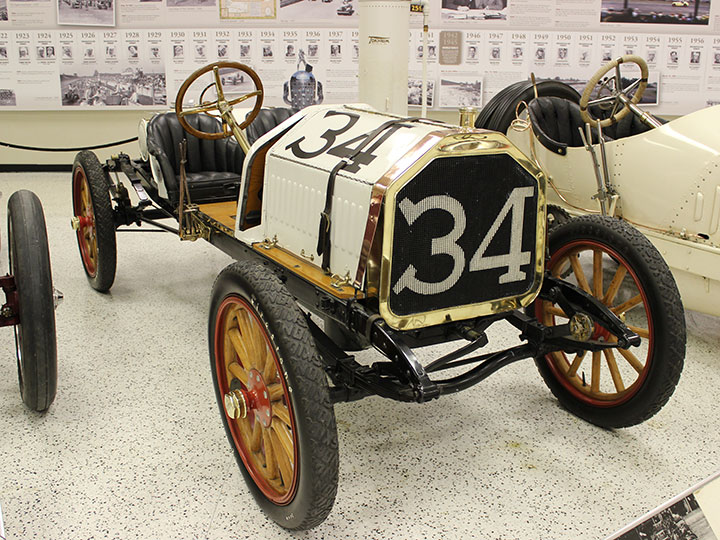
The first races at the Indianapolis Speedway
were held in August of 1909 and included both 10 mile and 250 mile
events. Buick entered three cars, including this one. Indianapolis
Motor Speedway Hall of Fame Museum. Author's Photo.
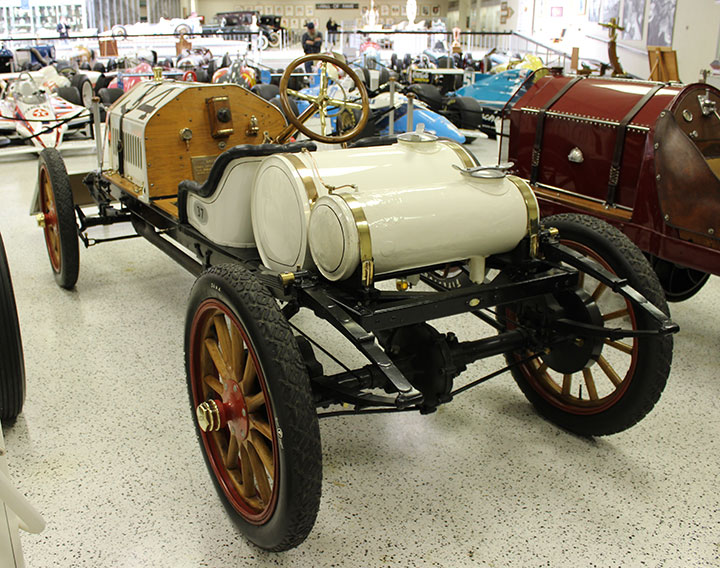
Author's Photo.
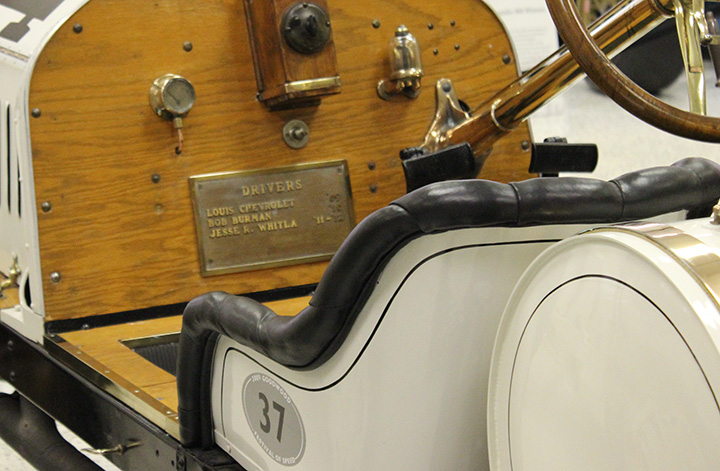
In the 1909 races, a driver by the name of
Louis Chevrolet won the ten mile race. He led for 52
miles in the main 250 mile race, which was won by one of the other Buick
vehicles. Author's Photo.
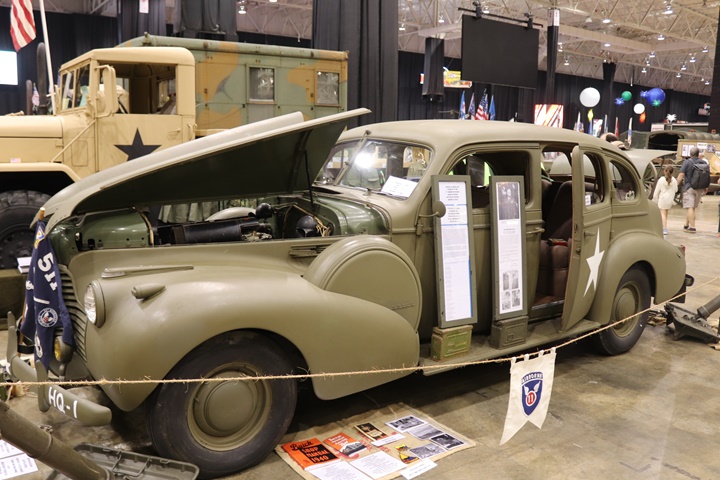
This pre-World War Two 1940 Buick Limited
Series 80 passenger car was used by the U.S. Army as a staff car.
It was Serial Number 38315128. It was on display at the 2017 MVPA
National Convention in Cleveland, OH. Author's photo added
12-25-2019.
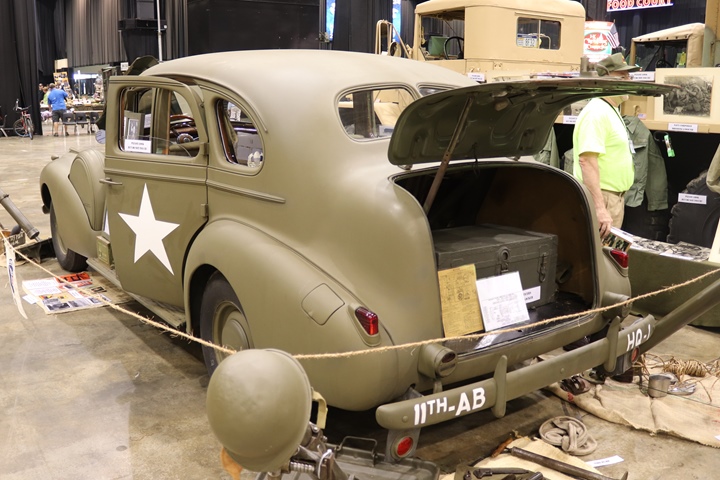
Author's photo added 12-25-2019.
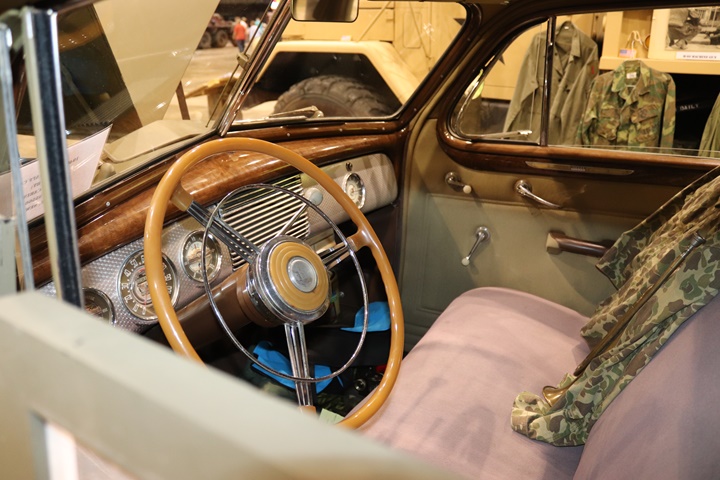
Author's photo added 12-25-2019.
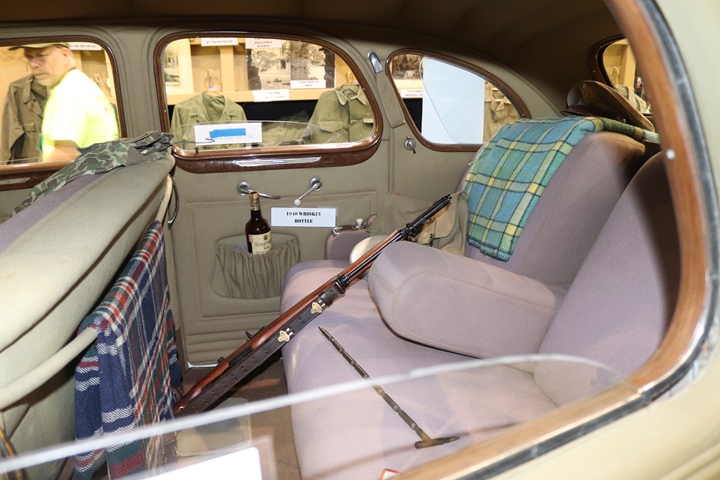
Author's photo added 12-25-2019.
Buick Motor Division of GM
World War Two Production Statistics: (71,874) Pratt & Whitney
R-1830 and (2,548) R-2000 radial aircraft engines, (2,507)
M18 Tank Destroyers, (640) M39 Armored Tractors, (19,928) M4, M10, and M26 transmissions and final
drive assemblies, (2,952) 90mm and 4.7 Anti-Aircraft Gun Mounts,
(148,196) Diesel Engine Crankshafts, (2,424,000) 75mm steel cartridge
cases, (1,149,300) 57mm shell bodies, (9,719,000) 20mm shell bodies,
(3,120,000) Pratt & Whitney R-1830 Aluminum Cylinder Heads, (52,200) Aluminum Cylinder Blocks
for the Packard-built Rolls-Royce Merlin aircraft engine, 204,500 Cylinder
Blocks and Heads for Hercules
engines, and (3,120,000) Cylinder Heads for the Pratt & Whitney aircraft
engines.
Notes: Final assembly of the
Buick R-1830, which was used exclusively in the Consolidated B-24 bomber
up through April 1944, was done at its plant in Melrose Park, IL, with
the machining and fabrication of components being shared between Melrose
Park and Flint operations. In April 1944, Buick signed a contract
to continue building the R-1830 for the B-24. It also began
building the R-1830 model for the C-47, which was slightly different
than the B-24 R-1830. It also started producing the R-2000 engine
for use in the Douglas C-54. Production and assembly of the R-2000
was undertaken at the Buick home plant in Flint starting in February
1945.
Several sources erroneously indicate that the C-54 was
powered by R-2800 engine instead of the R-2000, which then leads to the
wrong assumption that Buick built R-2800 engines. Page 132 of the
1950 Pratt & Whitney published book entitled "The Pratt & Whitney Story"
clearly states that Buick built the R-2000, not the R-2800.
Only the C-54 used the R-2000 during World War Two.
The 640 M39 Armored Tractors were conversions
of previously built M18 Hellcat Tank Destroyers. Buick had the
contract from Army Ordnance to do the work, but subcontracted all of the
work to the nearby Fisher Body Grand Blanc plant, which did all of the
work.

Buick Flint, MI won the Army-Navy "E" Award three times during World War Two.
Buick Melrose, IL won the Army-Navy "E" Award five times during World War Two.
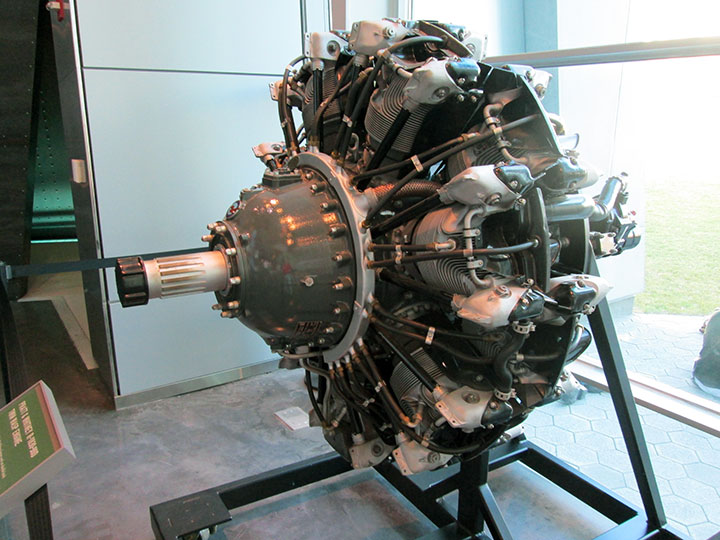
The Pratt & Whitney R-1830 1,200 hp radial
aircraft engine was on display at the National World War Two Museum in
New Orleans, LA. Out of the total 173,618 R-1830s built during the
war, Buick made 71,874 of them in the government
owned plant in Melrose Park, IL, west of Chicago. This was 43% of
the total. Buick-built engines were used exclusively on the 18,190 Consolidated B-24s
until April 1944, when Buick was contracted to build R-1830s for the C-47
as well. It should be noted that Chevrolet also built
R-1830s for the B-24 and C-47. Author's photo.
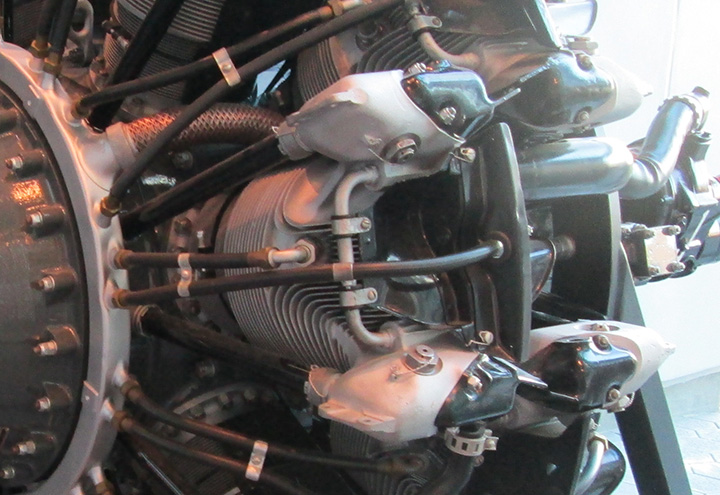
This shows a close-up of one of the fourteen
cylinders on the R-1830 with its cooling fins. During the
course of the Second World War. Buick built over 3.2 million cylinder
heads for Pratt & Whitney radial aircraft engines. Only 1,038,772
of the cylinder heads would be needed for Buick's own engine production.
After sparkplugs, which were changed sometimes after every combat
mission, cylinder heads were next on the list of components
replaced on a radial engine. So, an adequate number of spares would
have been required. See pages 2-3 and 12-13 below in "Buick at its Battle
Stations" for more information on this. Note how labor intensive
it was to make the fins on the castings.
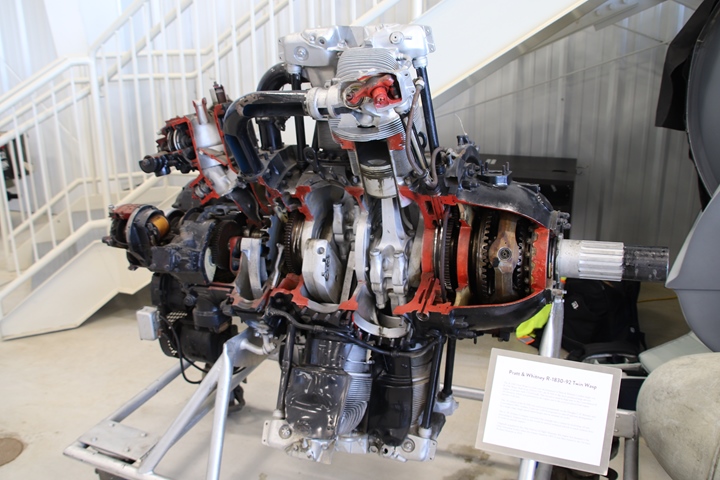
This R-1830 display at the Tri-State Warbird
Museum Batavia, OH shows the complexity of the engine. Author's
photo added 11-20-2020.
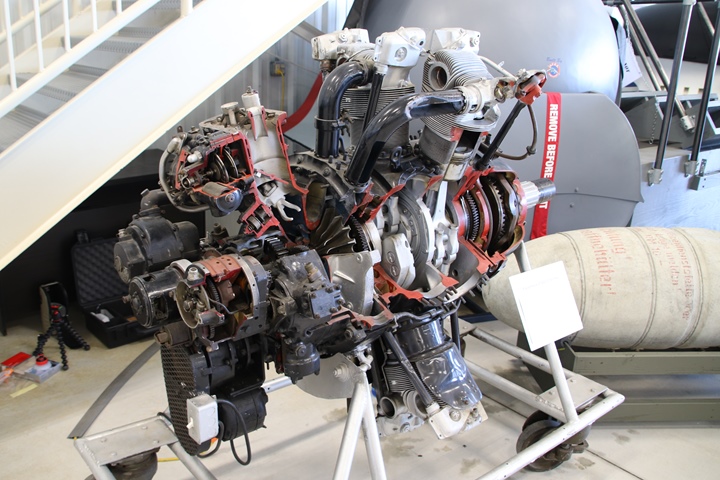
Author's photo added 11-20-2020.
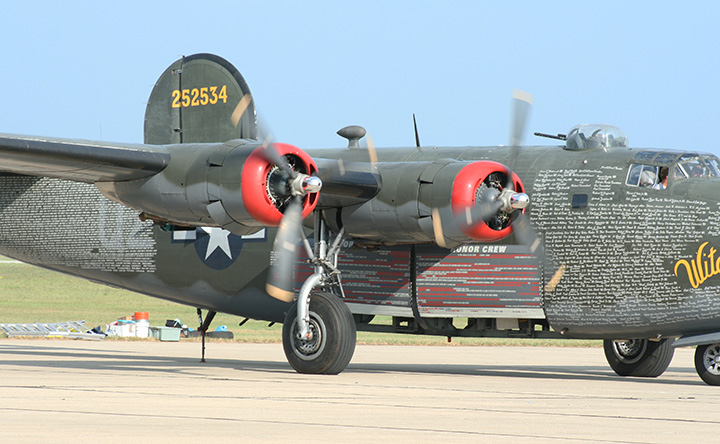
This photo shows a couple of Buick-built engines are
running on the B-24J Witchcraft. Author's photo from the 2011 Wings of
Freedom tour stop at Indianapolis Regional Airport.
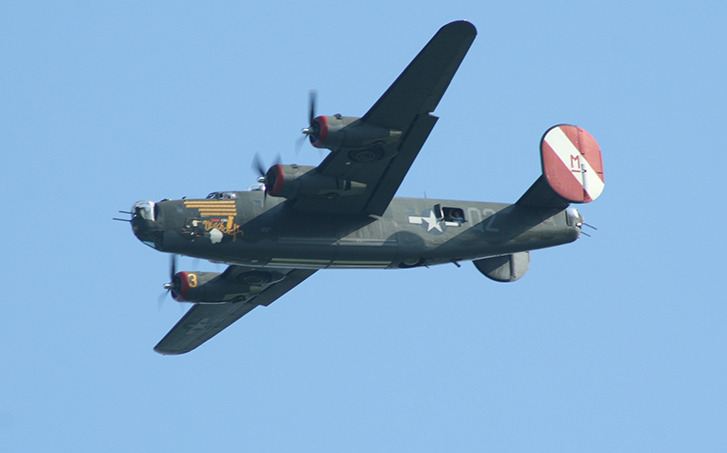
Here, Witchcraft powered by Buick-built R-1830 engines, does a fly-by. Author's photo.
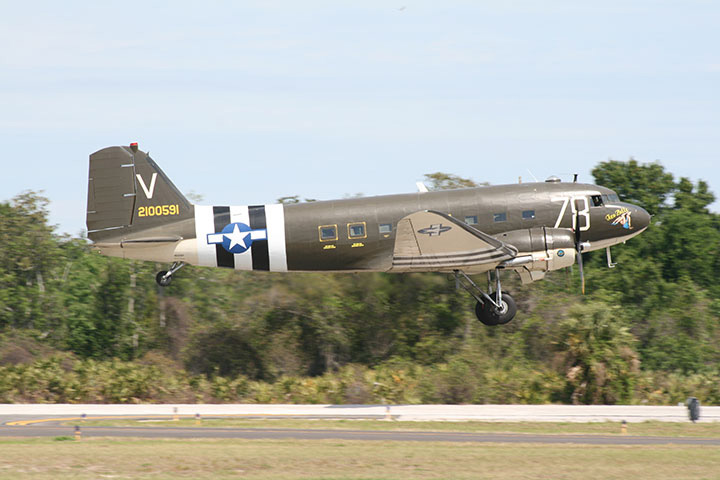
Many C-47s built in the last year of the war
were powered by Buick-built R-1830 engines. Author's photo.
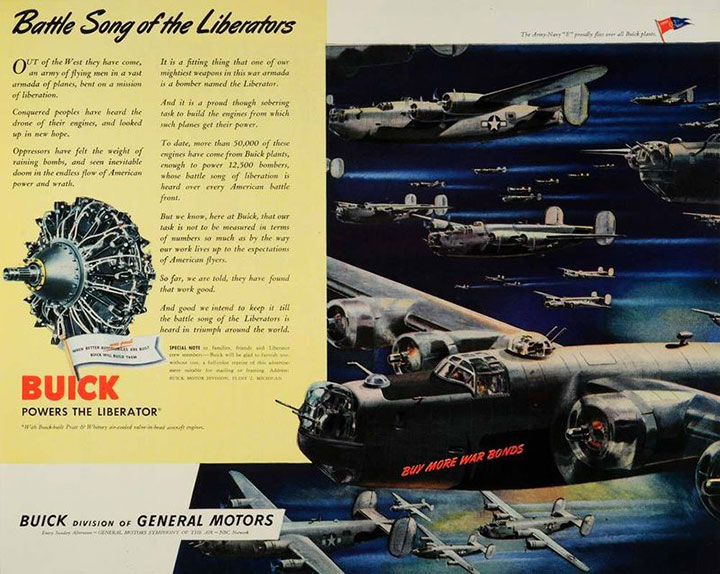
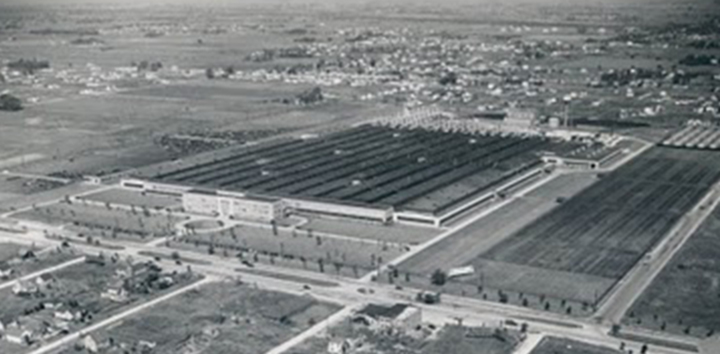
This World War Two era photo gives an aerial view of
the Melrose Park, IL, plant looking northwest. The photo below was
taken from the parking lot, looking in the same direction from the
parking lot on the east side. The complex covered 126 acres.
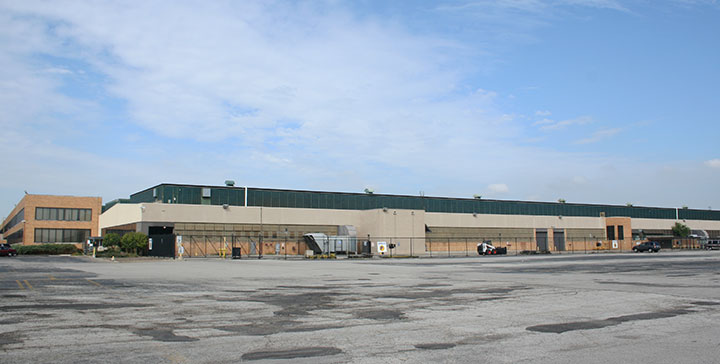
This is a contemporary photo of the former Buick
aircraft engine plant in Melrose Park, IL, where 71,874 Pratt & Whitney
R-1830 radial aircraft engines were assembled and tested before being
installed in B-24s and C-47s during the last year of the war. Engines would have been shipped from this
location to B-24 assembly plants at Willow Run, MI, Tulsa, OK, Dallas,
TX, Fort Worth, TX and San Diego, CA. C-47s were built at Long
Beach, CA, and Oklahoma City, OK. Author's photo.
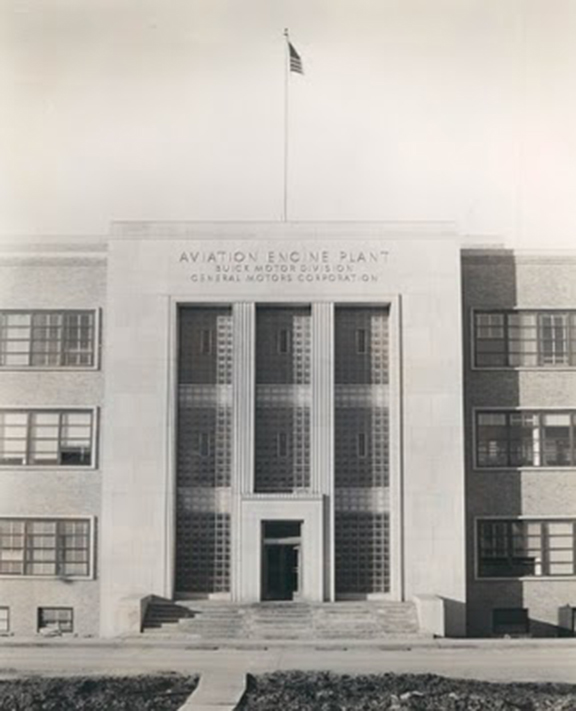
When Buick operated the plant, its name was
on the front. During World War Two the plant employed 10,000
persons.
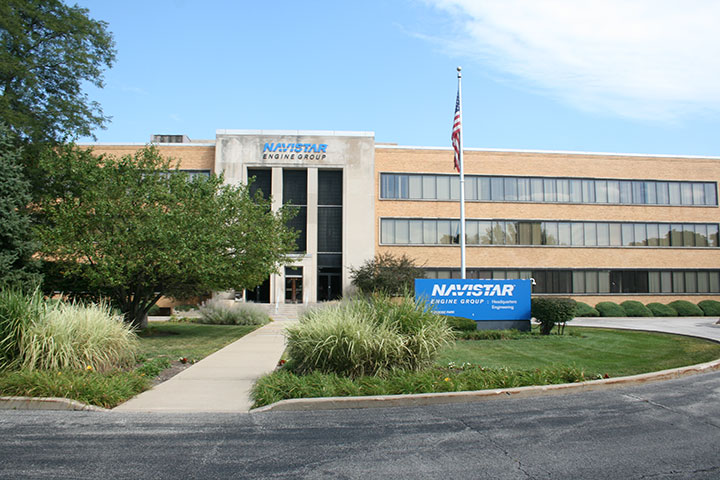
With the landscaping that has been
added, one cannot get the same photo as above. Author's photo.
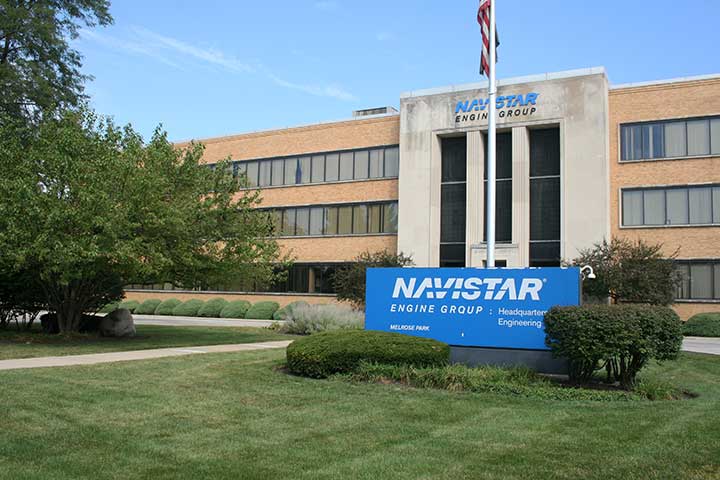
The Melrose Park plant was one of nineteen
government owned plants that General Motors operated during World War
Two. These facilities were built specifically for the production of war material.
In 1946, the 2,030,000 square foot plant was sold to
International Harvester by the War Assets Administration.
Since that time, International Harvester, now Navistar, has manufactured
six cylinder diesel engines in the facility. Author's photo.
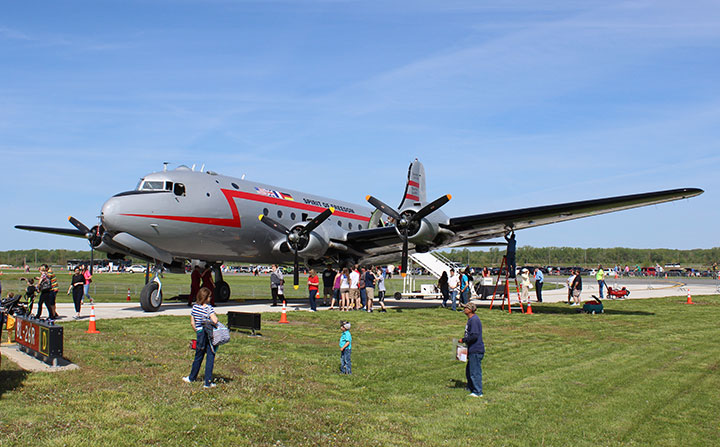
The Douglas C-54. Beginning in
February 1945, Buick built 2,548 Pratt & Whitney R-2000 engines
for this type of aircraft. Author's photo added 1-24-2015 from the
2014 St. Louis Airshow.
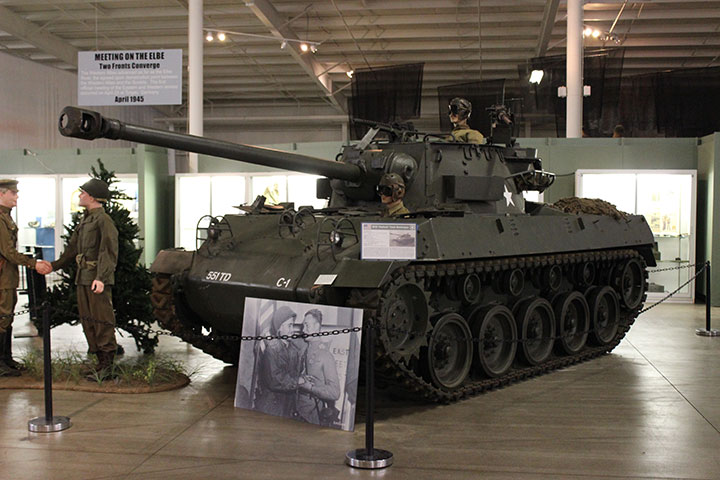
This pristine example of a Buick-built M18
"Hellcat" tank destroyer was previously on display at the now closed
National Military Historical Center in Auburn, IN. This M18 is now
in Florida as of 2017. Author's photo.
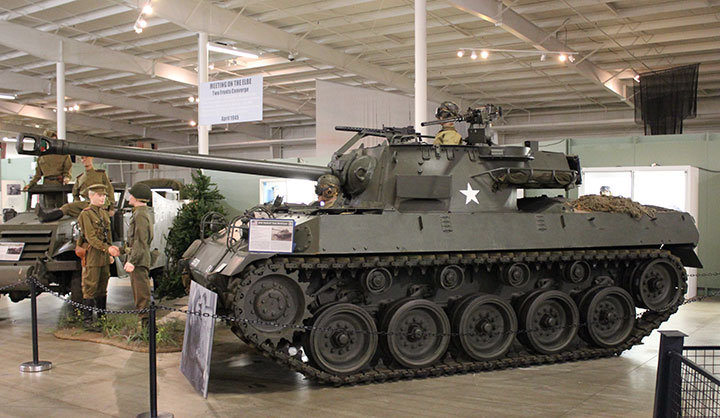
Buick built 2,507 of these at its plant in Flint, MI. Author's photo.
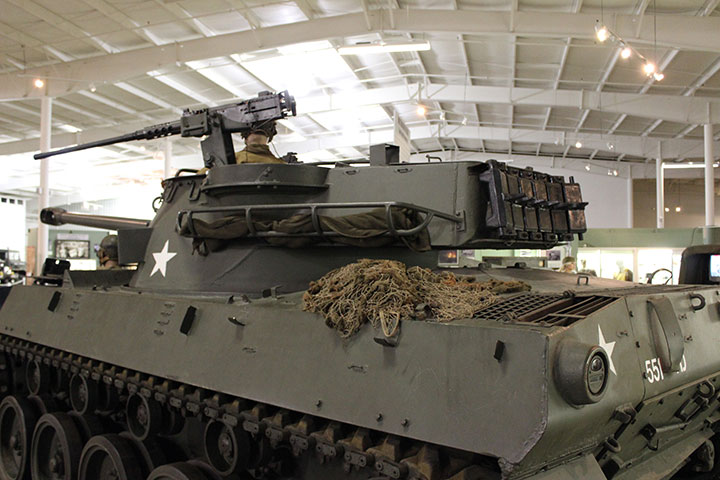
Author's photo.
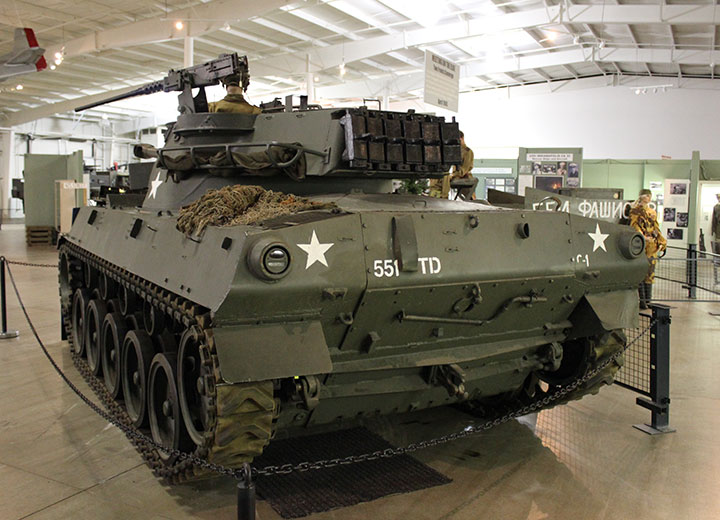
Author's photo.
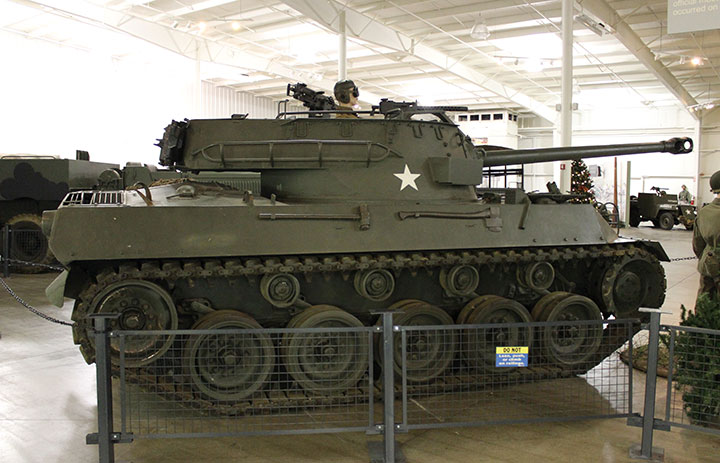
Author's photo.
|
Buick M18 Hellcat Production |
| 1943 |
Jul |
Aug |
Sep |
Oct |
Nov |
Dec |
1944 |
Jan |
Feb |
Mar |
Apr |
May |
Jun |
Jul |
Aug |
Sep |
Oct |
| |
6 |
83 |
112 |
150 |
267 |
194 |
|
250 |
218 |
170 |
150 |
150 |
150 |
150 |
150 |
150 |
157 |
|
Buick M18
Hellcat in Europe 1944-1945 - Strength and Losses |
| |
Jun44 |
Jul44 |
Aug44 |
Sept44 |
Oct44 |
Nov44 |
Dec44 |
Jan45 |
Feb45 |
Mar45 |
Apr45 |
May45 |
Total |
|
Strength |
146 |
141 |
176 |
170 |
189 |
252 |
306 |
312 |
448 |
540 |
427 |
427 |
Losses |
|
Losses |
0 |
0 |
6 |
6 |
14 |
7 |
44 |
27 |
16 |
21 |
55 |
21 |
217 |
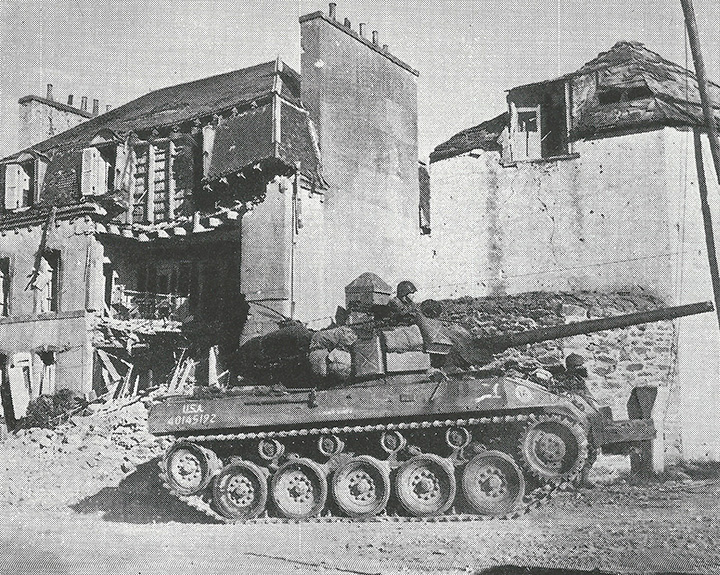
A Buick built M18 "Hellcat" is in action
in Europe.
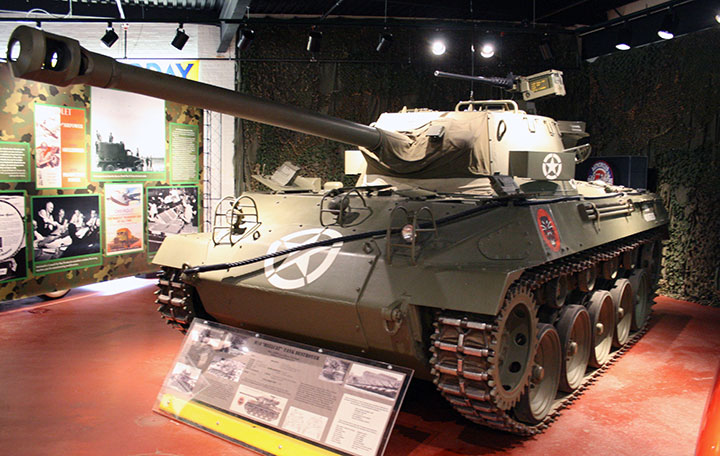
This M18 can be seen at the Buick Museum in Flint, MI, just a couple of
miles away from where it was built. The factory that built it no
longer stands. This particular "Hellcat" was found in a junk yard
in Europe after having served in conflicts in the Balkans at the end of
the 20th century. Author's photo.
See pages 3-7 below in "Buick at its Battle Stations" for more
information on the M18.
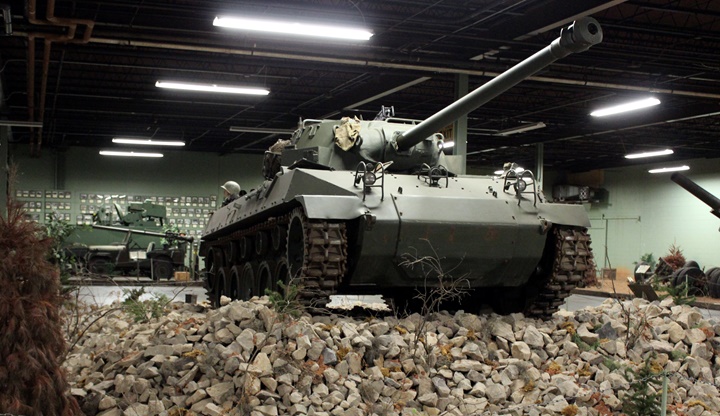
This M18 Hellcat tank destroyer is on
display at the AAF Tank Museum in Danville, VA and came to the museum
after also serving in Bosnia. Author's photo.
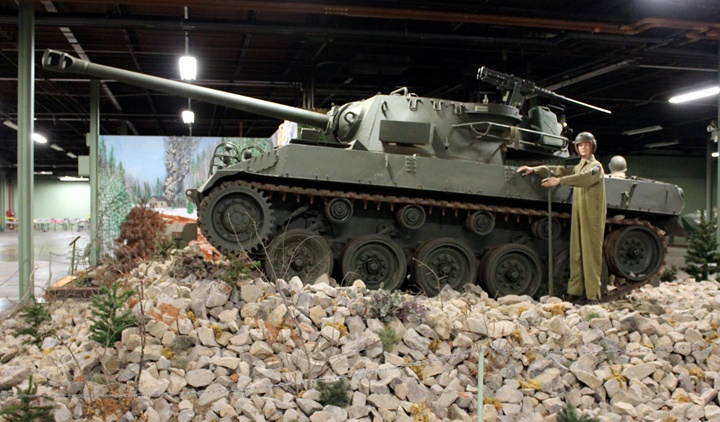
Author's photo.
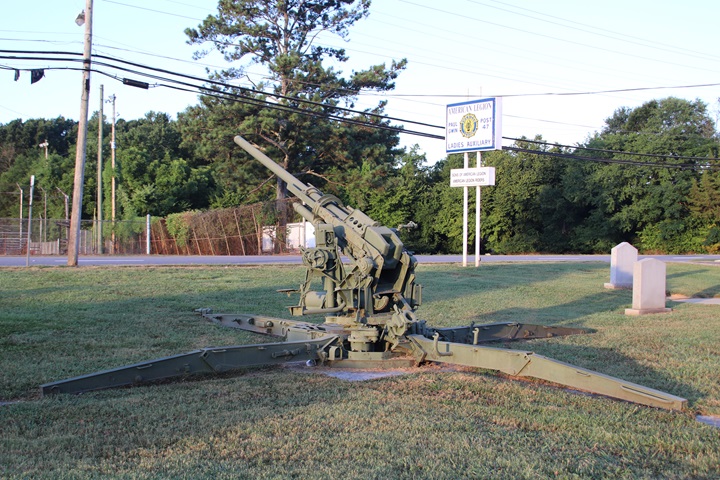
Buick built 2,952 mounts for 90mm anti-aircraft guns like this one. See page 14 below in "Buick at its Battle Stations" for more
information.
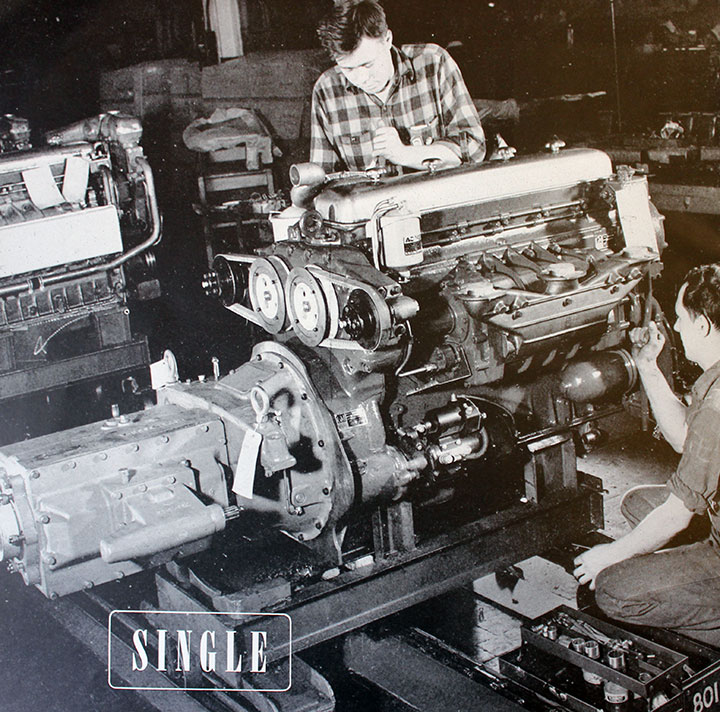
This is a photo of a Detroit Diesel 6-71 engine. Buick supplied
148,196 crankshafts for the approximately 190,000 engines built.
See page 15 below in "Buick at its Battle Stations" for more information
on the diesel crankshaft production.
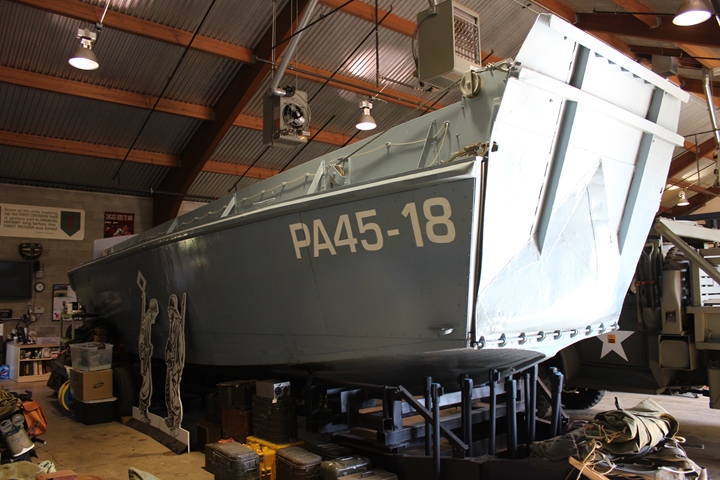
Detroit Diesel 6-71 engines were installed in 19,353 LCVP landing craft like this
one seen at the First Division Museum at Cantigny in Wheaton, IL. Buick built crankshafts
for the 6-71 engines which were instrumental in many American amphibious landings, especially
the famous one at Normandy. Author's photo added 10-12-2015.
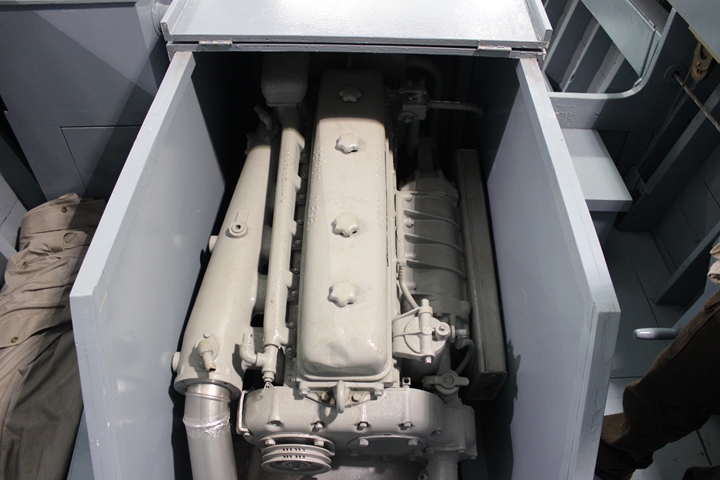
Buick built148,196 crankshafts for the 6-71.
So, this engine must have had a Buick crankshaft in it. Author's photo added
10-12-2015.
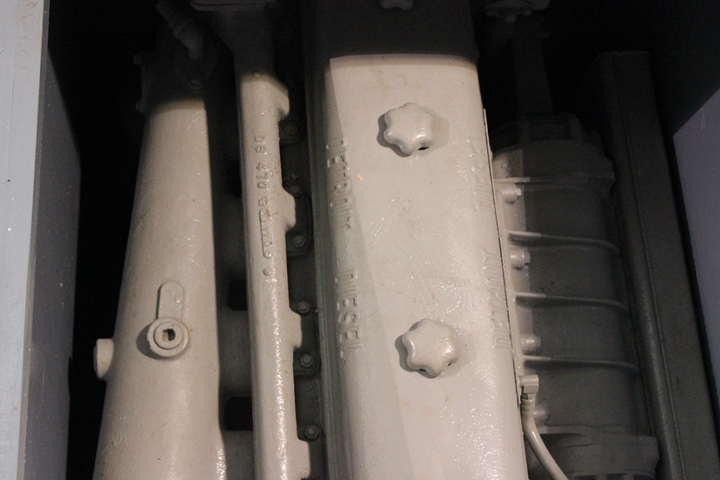
Detroit Diesel can be seen stamped on the
valve cover. Author's photo added 10-12-2015.
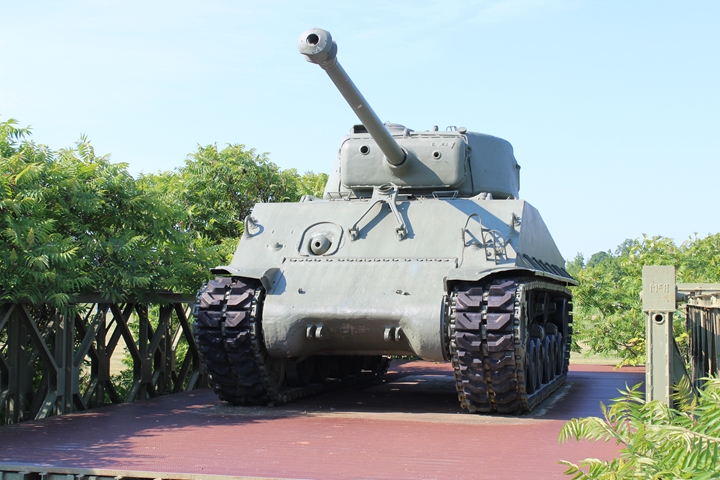
Not only did Buick-manufactured crankshafts end up in landing craft, but
also in M4A2 Sherman tanks with Detroit Diesel engines. Buick also
supplied 19,928 transmissions that not only powered the Fisher Body-built M4A2 and M4A3, but the M10 tank destroyer and M26 Pershing tank as
well. Author's photo.
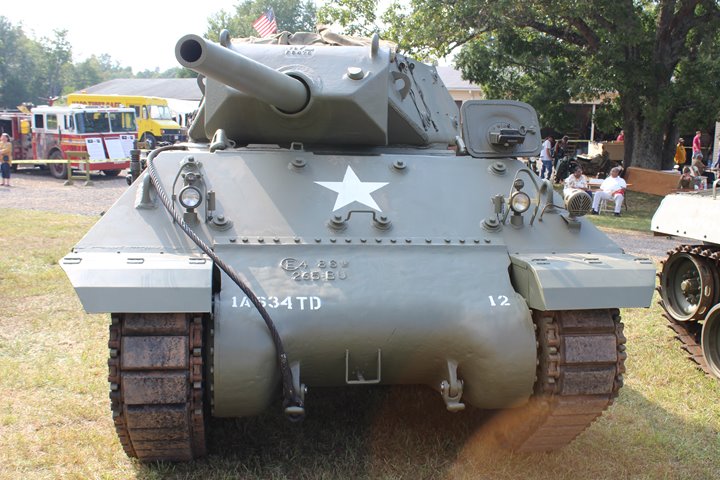
The engines were in the rear of the M4A2s and M4A3s Sherman tanks, as well as the M10 Wolverine and M36
Jackson tank destroyers. The driveshaft came up through the center of the tank to drive the treads from the
front axle. Buick built transmissions that transferred the power from
the driveshaft to the front axle like on this M10 tank destroyer. See
page 9 below in "Buick at its Battle Stations" for more information on
the diesel crankshaft production. Author's photo.
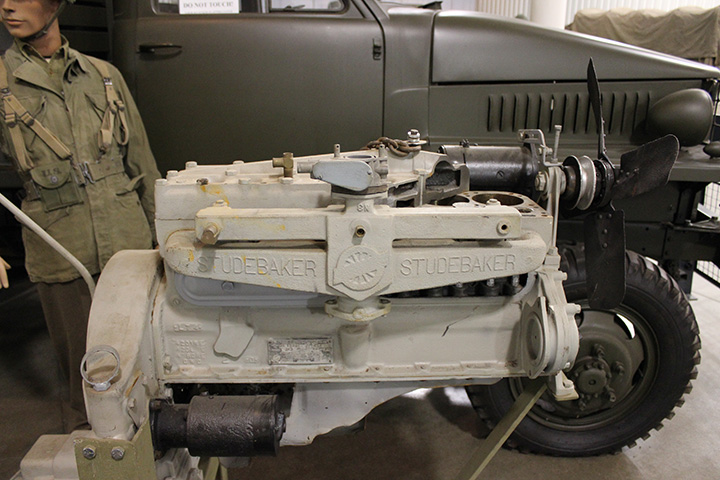
Buick produced 204,500 cylinder heads and
engine blocks for Hercules truck engines. One application of the
Hercules engine was this six cylinder JXD model that was used in the
Studebaker 2-1/2-ton truck. Studebaker obviously had its name on
the intake manifold. The 320 cu. in. engine could produce 86 hp.
Author's photo from the National Military Historical Center, Auburn, IN
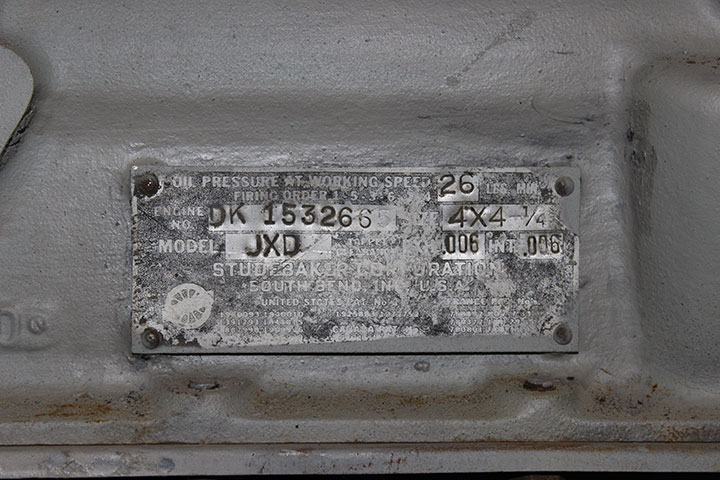
Author's photo.
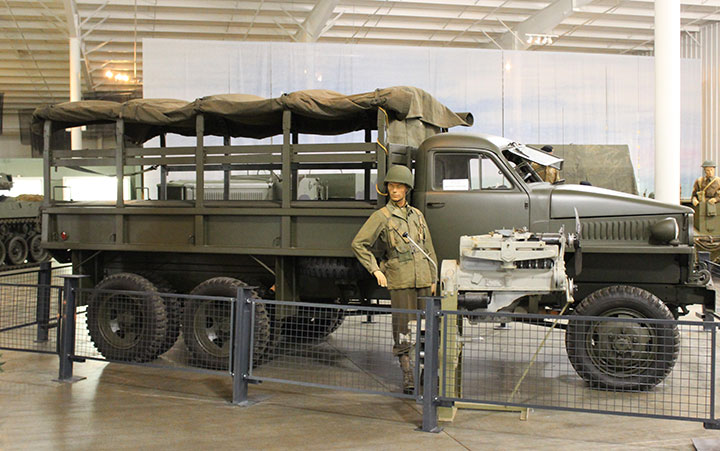
This Studebaker 2-1/2-ton truck was on display at
the now closed National Military Historical Center. This vehicle is no longer
at this location as of December 2017. Author's
photo.
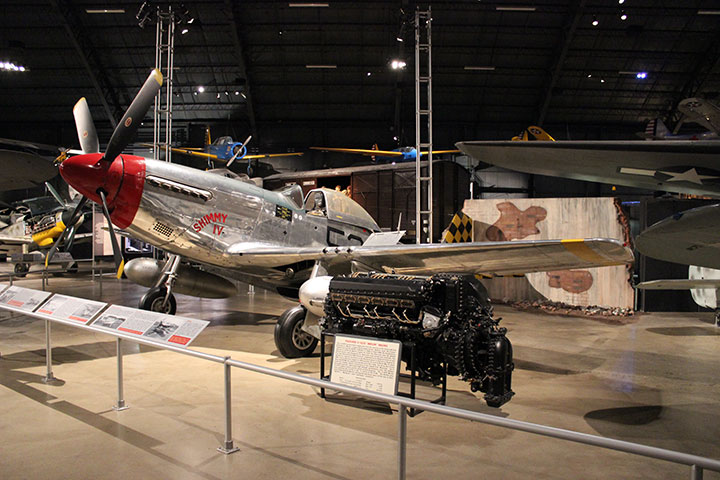
This Packard Rolls-Royce V-1650 Merlin in front of a P-51 Mustang was
one of 54,714 engines that Packard built at its Detroit plant during the
Second World War. Buick supplied 52,200 aluminum cylinder blocks
of the 109,428 needed for the engines. Each engine had two blocks
of six cylinders that mounted on the crankcase. Author's photo at
the National Museum of the US Air Force in Dayton, OH.
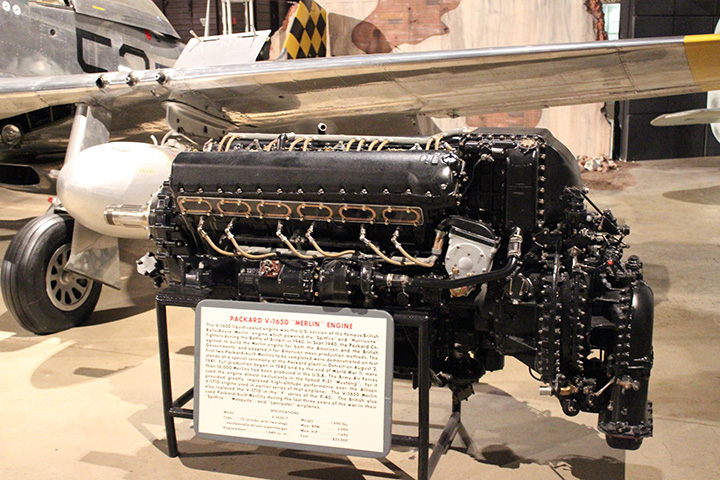
With around 150 Mustangs still flying in the US, most likely many
of them have Buick-built cylinder heads in their engines. The
Merlin was the best inline aircraft engine of WWII. Author's photo
Buick at its Battle Stations
November 1944
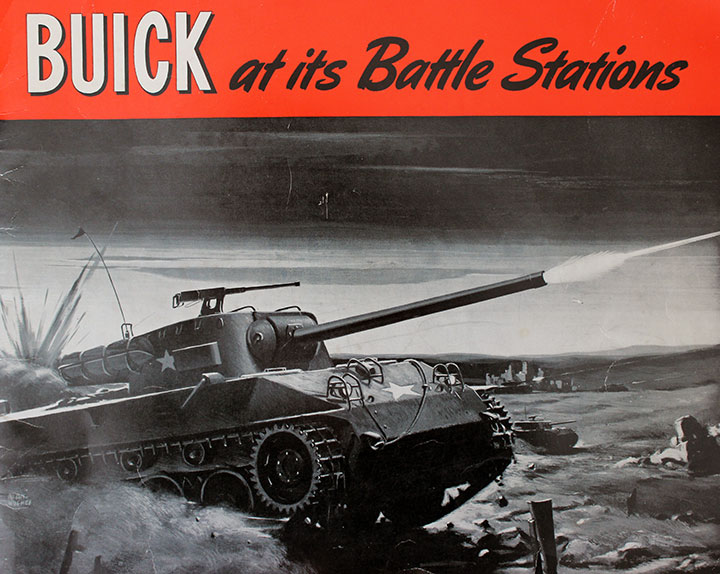
Front Cover.
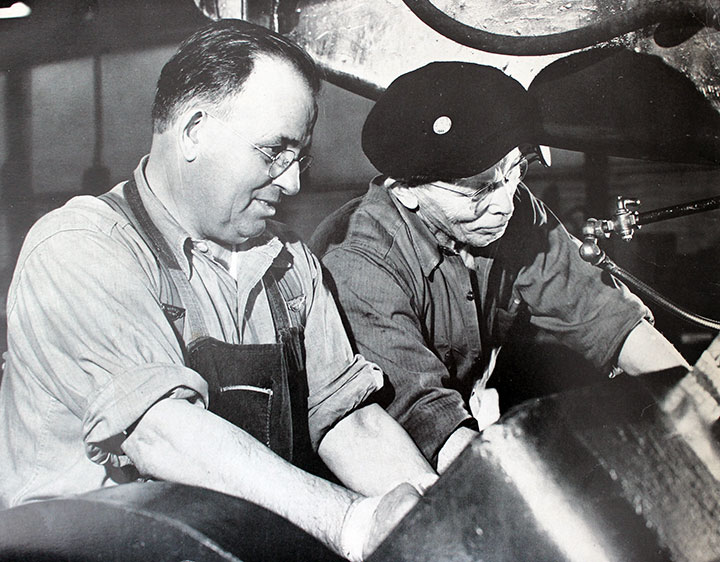
Inside Front Cover.
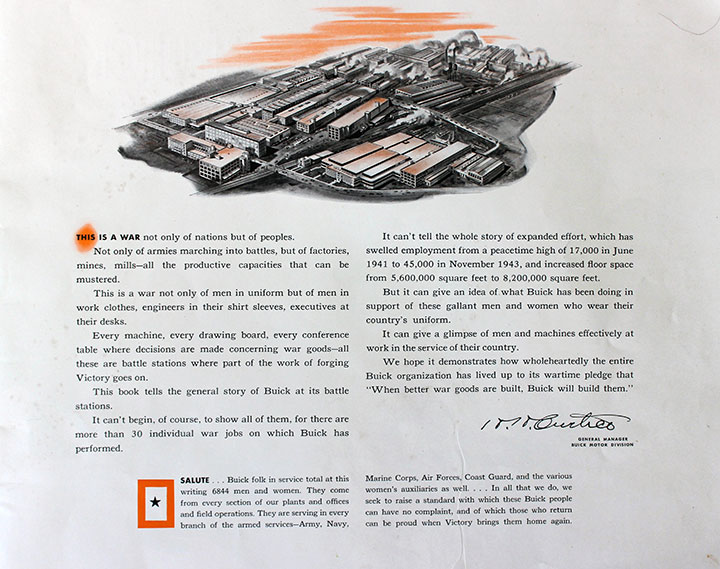
Page 1.
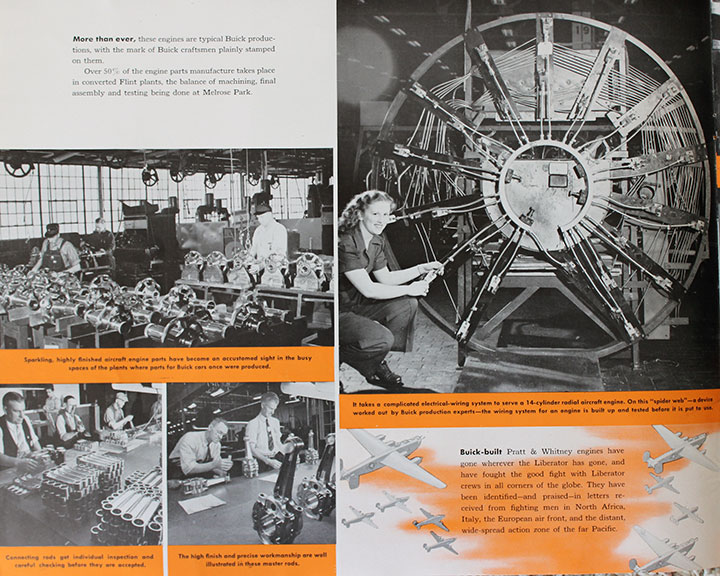
Page 2.
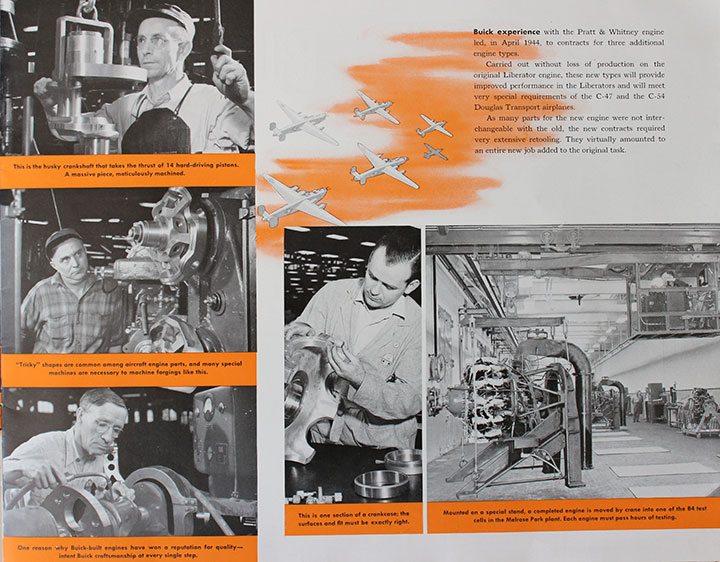
Page 3.
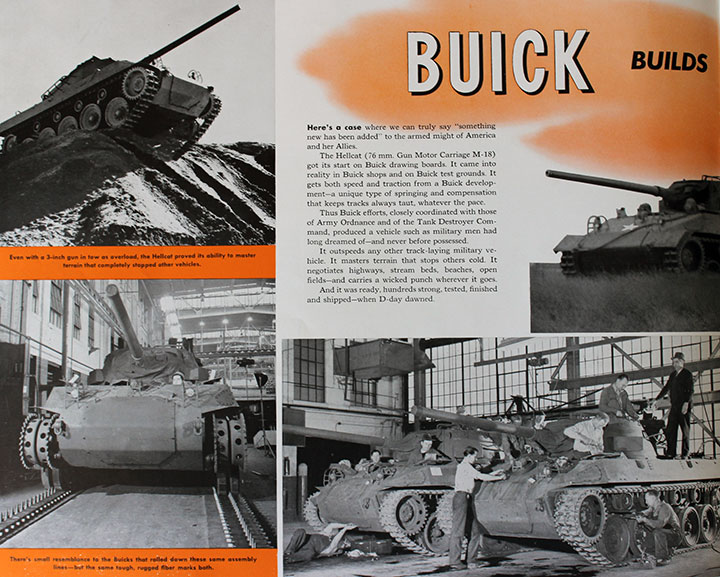
Page 4.
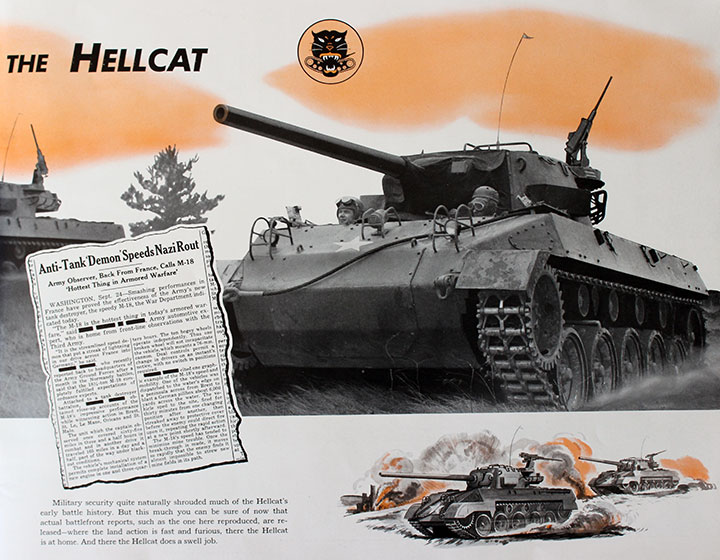
Page 5.
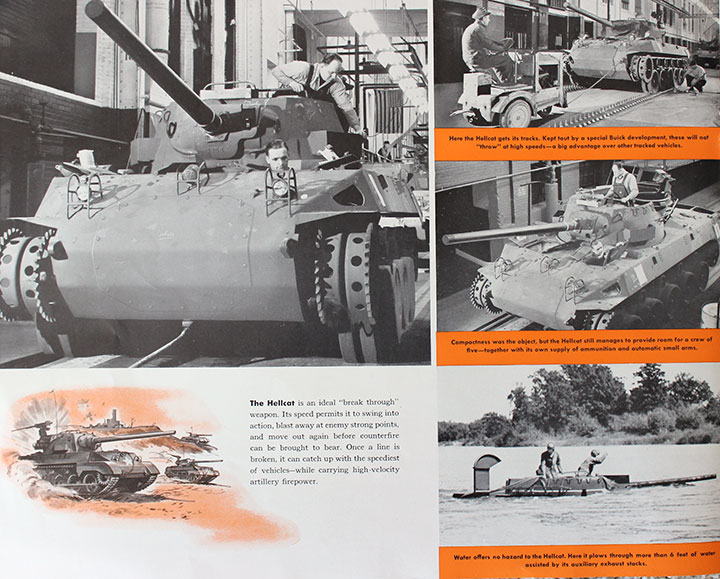
Page 6.
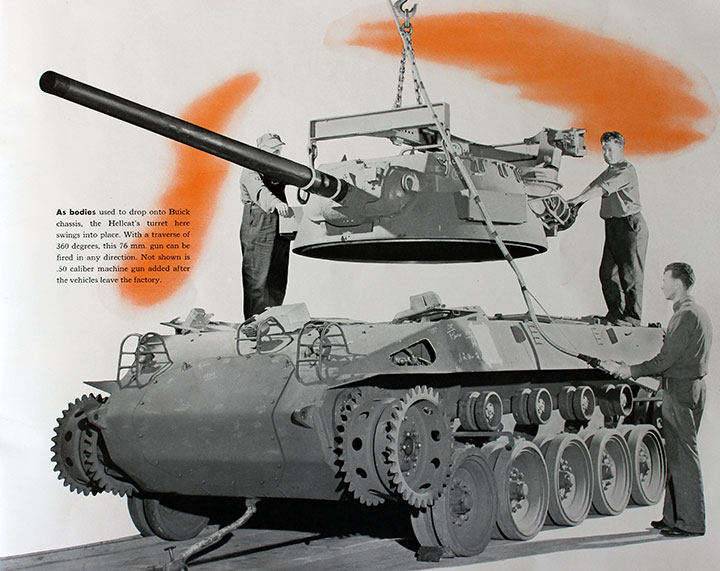
Page 7.
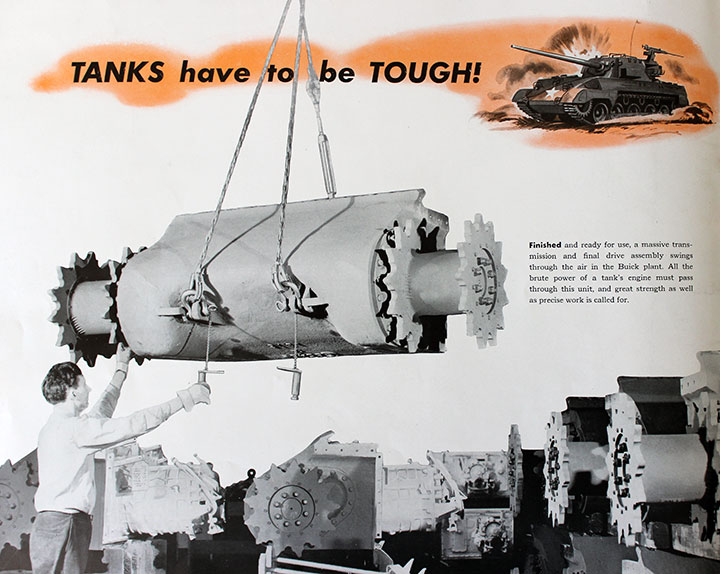
Page 8.
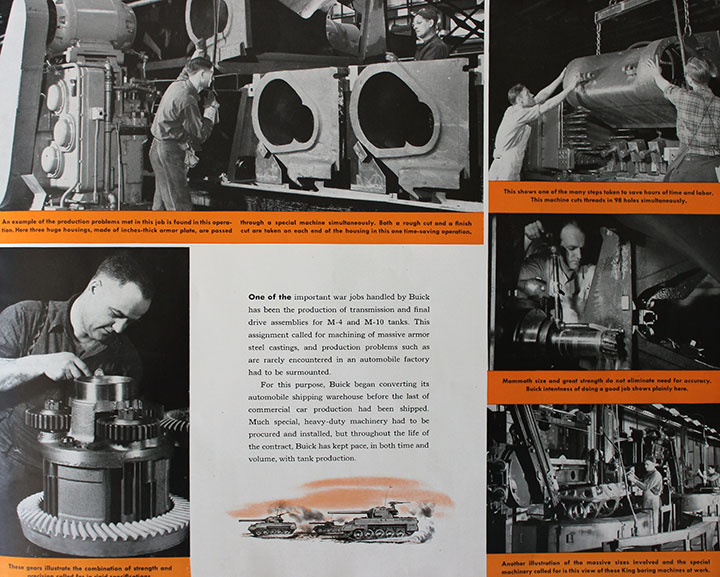
Page 9.
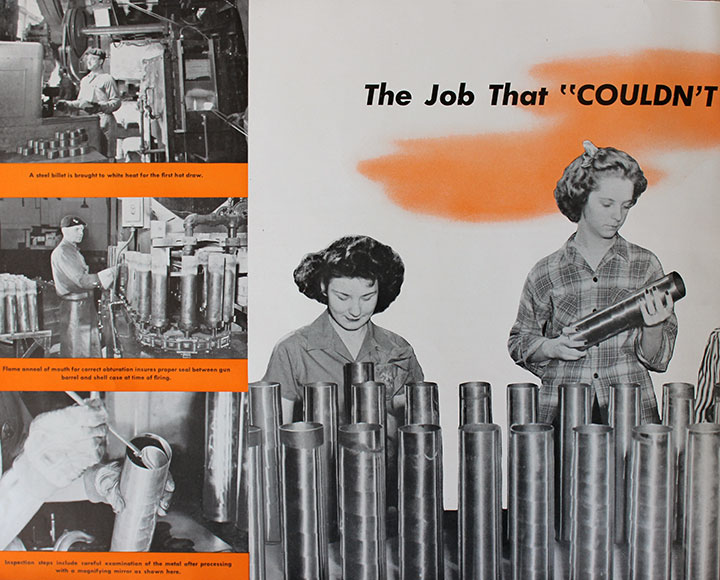
Page 10.
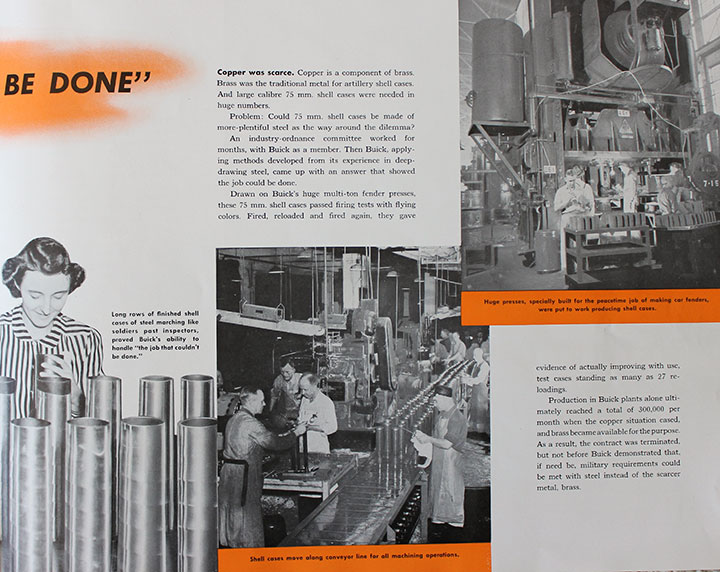
Page 11.
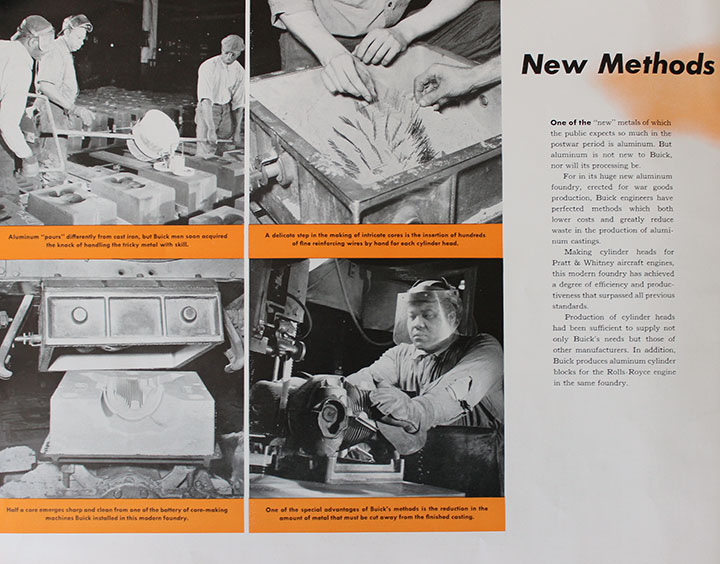
Page 12.

Page 13.
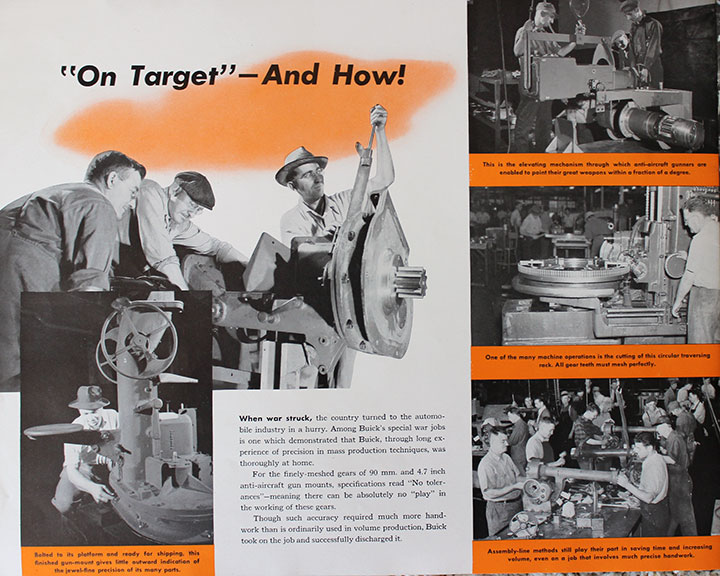
Page 14.
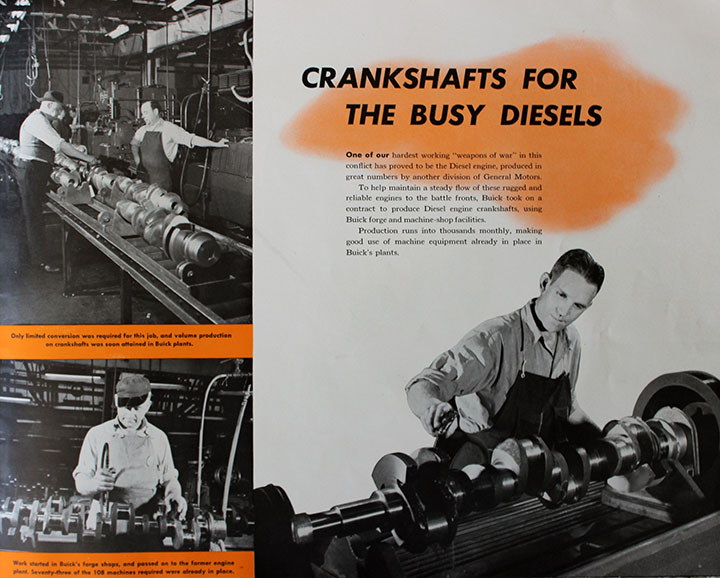
Page 15.
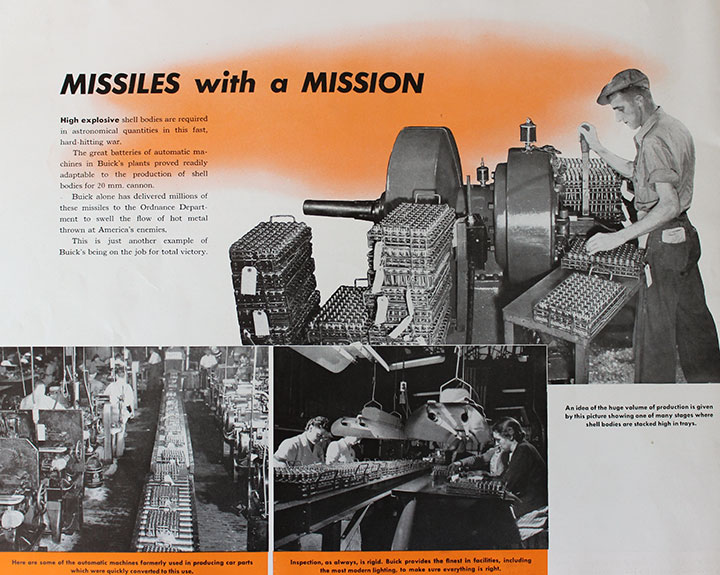
Page 16.
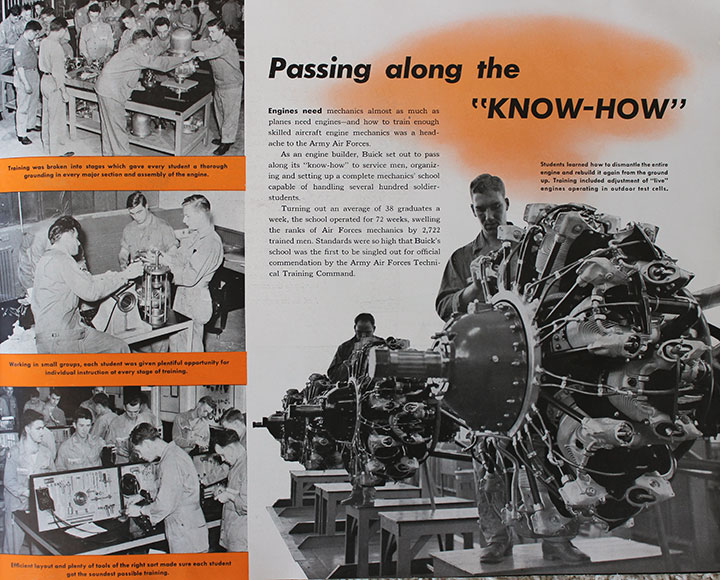
Page 17.
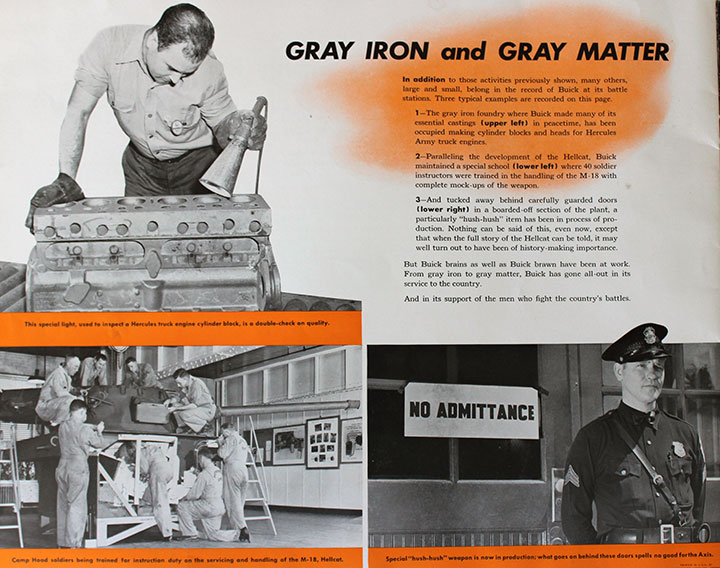
Page 18.
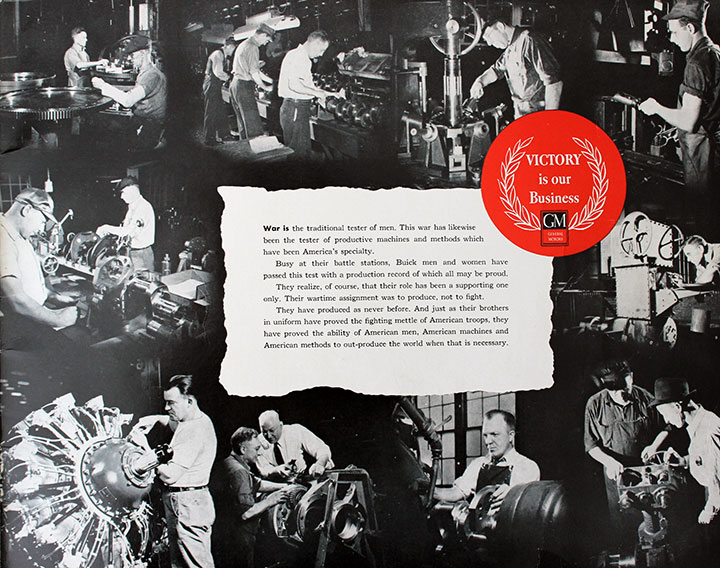
Inside of Back Cover.
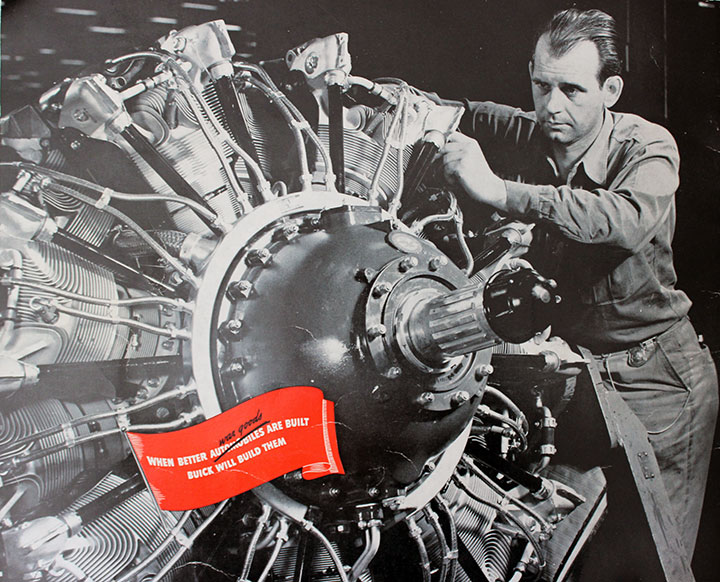
Back Cover.
Find out more about Buick in WWII by visiting
my links page.
|
































































